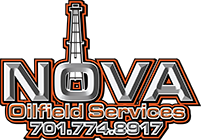Safety is crucial when working with oilfield equipment. Proper equipment use helps prevent accidents and ensures the well-being of everyone on the job site. Whether drilling, pumping, or transporting materials, following essential safety tips is vital to maintaining a safe work environment.
Understanding the need for proper training and certification is the first step in ensuring safety. By paying attention to these aspects, we can create a safer, more efficient work environment in the oilfield industry.
Understanding Proper Training and Certification Requirements
Understanding proper training and certification requirements is essential for anyone handling oilfield equipment. Operators must be thoroughly trained to use various machines safely and effectively. This training includes both classroom instruction and hands-on experience. Ensuring that every team member has the proper knowledge can prevent accidents and improve overall efficiency on the job site.
Certification is another crucial aspect of safety. Operators should be certified by recognized institutions. Certification ensures that operators meet the industry standards and know the best practices for operating equipment. Periodic refresher courses are also essential to keep skills up-to-date and to introduce new safety protocols.
In addition to training and certification, regular safety meetings help reinforce these practices. Discussing potential hazards and reviewing safety procedures keep safety top-of-mind for everyone. By prioritizing training and certification, we create a safer work environment and reduce the risk of accidents.
Regular Equipment Inspections and Maintenance
Regular equipment inspections and maintenance are critical to ensuring safety on the job site. Consistent inspections help identify potential issues before they become serious problems. This preventive approach reduces the likelihood of equipment failure, which can lead to accidents or project delays.
A checklist can guide us through the inspection process. Key points to check include:
– Fluid levels and leaks
– Hydraulic and electrical systems
– Wear and tear on moving parts
– Proper functioning of safety features
After identifying any issues, promptly addressing them through maintenance is crucial. Fixing minor problems early prevents them from turning into more extensive, costlier repairs later. It also keeps the equipment in good working condition, ensuring it operates safely and efficiently.
By conducting regular inspections and maintaining our equipment, we minimize the risk of unexpected breakdowns and enhance the safety of our operations. Keeping machinery in top shape is not just good practice but essential for a secure and productive job site.
Using Personal Protective Equipment (PPE)
Wearing personal protective equipment (PPE) is crucial when working with oilfield equipment. PPE provides the necessary protection against hazards and reduces the risk of injuries. Everyday PPE items include helmets, gloves, safety glasses, and steel-toed boots. Each piece of equipment is vital in keeping us safe on the job site.
Helmets protect our heads from falling objects and bumps, while gloves safeguard our hands from cuts, burns, and chemical exposures. Safety glasses shield our eyes from debris and harmful substances, and steel-toed boots protect our feet from heavy objects and provide stability on uneven surfaces. Wearing the appropriate PPE for specific tasks ensures we are well-protected against potential dangers.
It is essential to regularly inspect PPE for damage or wear. Damaged or worn-out equipment should be replaced immediately to maintain its effectiveness. Properly caring for and using PPE helps create a safer work environment and reduces the likelihood of accidents and injuries.
Emergency Preparedness and Response Plans
A solid emergency preparedness and response plan is essential for oilfield safety. Emergencies can happen without warning, so acting quickly and effectively is essential. Our plan should cover various emergencies, such as equipment failures, fires, and medical incidents.
First, clear communication is vital during an emergency. Everyone should know how to report an emergency and whom to contact. Designating emergency contacts and roles ensures that every team member understands their responsibilities. Regular emergency drills can help us practice our response and identify areas for improvement.
Next, having emergency supplies on hand is crucial. This includes first aid kits, fire extinguishers, and spill containment materials. Easily accessible emergency supplies can make a significant difference in handling a situation promptly.
Finally, regular review and updates to our emergency plans ensure their effectiveness. As projects and teams change, our emergency plans should also evolve. Keeping everyone informed and prepared helps us respond swiftly and effectively, minimizing the impact of any incidents.
Conclusion
Safety in the oilfield industry is paramount, and following essential safety tips can significantly reduce accidents and ensure a secure work environment. Proper training and certification, regular equipment inspections, the use of personal protective equipment, and thorough emergency preparedness are critical components of maintaining safety on the job site. By prioritizing these measures, we create a culture of safety and responsibility, protecting our team and resources.
Focusing on these safety aspects allows us to perform our tasks confidently and efficiently, knowing we have minimized the risks of working in an oilfield environment. Safety is not just about following rules; it’s about caring for our well-being and those around us.
Nova Oilfield Services is here to help with comprehensive oilfield equipment rentals and support. Contact us today to learn how we can support your projects while ensuring the highest safety standards.








